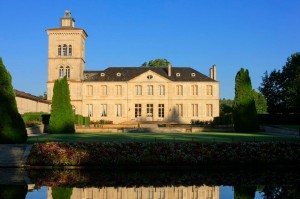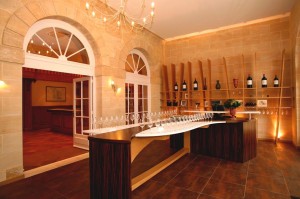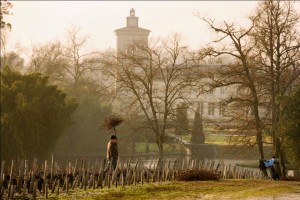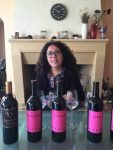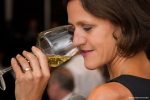Château Lagrange
The rebirth of beautiful Saint-Julien wine
Château Lagrange is a winery/vineyard located in the west of the Saint-Julien AOP, in Saint-Julien-Beychevelle.
It is not known exactly since when the vines are grown on that land. Some texts and traces suggest that in the Middle Ages it was already growing vines on the field. Of course like all agricultural properties at this time the Lagrange was not entirely focused viticulture but they runned mixed farming (livestock, forestry, agriculture).
Château Lagrange itself was created in the seventeenth century (1618) by Jean de Vivien following the meeting of two properties: the Tenement of Pellecahus historically founded by the Templar Knights but belonging to the Hospitallers of the Order of Malta and the Noble House of Lagrange Monteil. The latter the Château Lagrange also inherited the name. Of these old properties there is no longer any buildings, but remain the writings, maps and the names of the plots (La Chapelle, L’hôpital, le Chai)
 Note that in the 19th century Château Lagrange extended over more than 280 hectares. At that time the Château Lagrange, property of the Count Charles Tanneguy Duchâtel, former Minister of the Interior of King Louis Philippe, lived his greatest glory days. Known for centuries for the quality of its production it was ranked 3rd Classified Growth in 1855.
Note that in the 19th century Château Lagrange extended over more than 280 hectares. At that time the Château Lagrange, property of the Count Charles Tanneguy Duchâtel, former Minister of the Interior of King Louis Philippe, lived his greatest glory days. Known for centuries for the quality of its production it was ranked 3rd Classified Growth in 1855.
Over the centuries the property changed families several times and fell gradually declining. It was bought to the Cendoya family in 1983 by the Japanese Suntory Group which already owns many brands of spirits.
Upon arrival they embarked on a policy of renovation and reorganization of the vineyard established regain back to its former Château Lagrange acclaim. They hired Marcel Ducasse, to be in charge of this mission. In a few years and according to terroirs studies over sixty hectares of vines were uprooted and replanted. The vat room and cellars were also completely redone between 2008 and 2012 in order to make wine plot per plot (96 tanks that are between 66 and 152 hectoliters). A policy that brought and still pays off since tasting several vintages there is a steady increase in the quality of wines.
Currently the property covers 157 hectares (118 planted) in one piece, two ridges of Quaternary Garonne gravels (Günziennes). The vineyard is planted to about 67% Cabernet Sauvignon, 28% Merlot and 5% Petit Verdot. Some plots are planted with white varieties allowing the Château Lagrange produce each year between 20.000 and 22.000 bottles of its white wine “Les Arums de Lagrange » (Bordeaux AOP). Its location also makes Château Lagrange one of the highest property (23 meters) of the Saint-Julien appellation.
In recent years the Château Lagrange opened a guest house, “Les Jardins de Lagrange“, featuring of 14 rooms. They are intended for wine professionals but also to groups of winelovers (wineclub, commanderies …). The property also opened a Wine Shop/Tasting Room in 2013. Each year more than 6000 people move to find this property.
Focus on Benjamin Vimal, Technical Director of Château Lagrange
“I’m not from a wine region, I’m from Auvergne. It is not because a family legacy that I headed to that sector but passion for winemaking. I had the chance to make from my job a passion. I wanted to make an agricultural job in contact with nature and that allows me to produce and transform a natural product. I love what I do, see the product evolves with the seasons and once transformed see change as the years.” (Benjamin Vimal)
What allows to you to recognize the Château Lagrange in blind tasting?
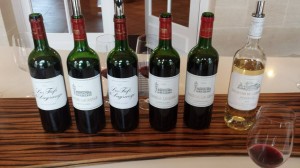 “In first we can find it due to the color. Our wines have a color that evolves more slowly than the wines of our neighbors. It therefore seems often younger than other.
“In first we can find it due to the color. Our wines have a color that evolves more slowly than the wines of our neighbors. It therefore seems often younger than other.
During a tasting there are two other markers that identify the wines of Château Lagrange: balance, freshness with quite enough interesting acidity levels.
The nose is complex and reveals beautiful oaky notes. The nose is pretty and is on berries.” (Benjamin Vimal)
What is the wine for you, if you had to describe the wine in a few words?
“Complexity, freshness, collegiality, exchange and passion” (Benjamin Vimal)
Side story:
For the anecdote Château Lagrange between 1712 and 1746 was the property Charles de Branne de Cours. He was from a bourgeois family owner of several Bordeaux vineyards whose example the famous Chateau Mouton who later became Chateau Mouton-Rothschild.
Thanks to Benjamin Vimal for his warm welcome.
Château Lagrange
33250 Saint-julien de Beychevelle
+33 (0)5 56 73 38 38

